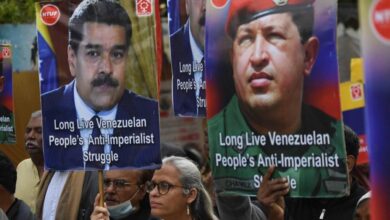Venezuelan Cheese Production Rises: Can Latin America Become an Agricultural Power?
The cheese industry in Venezuela has surprised by its rapid growth, but is it a real path for Latin American agriculture or a mere mirage?

Photo: Pixabay
LatinAmerican Post | Luis Angel Hernández Liborio
Escucha este artículo
Leer en español: Producción de queso venezolano aumenta: ¿Puede Latinoamérica convertirse en potencia agrícola?
Venezuela has surprised locals and strangers, a recent bulletin from the Latinometrics analysis site shows the South American country as the second largest cheese producer in the region and, furthermore, one of the largest in the world, surpassing countries with a long cheese tradition such as the same Switzerland. The Venezuelan achievement is remarkable, they have tripled their production in two decades. It demonstrates an agricultural and livestock potential that is found throughout the region, but that requires profound changes to function.
Venezuelan Cheese Recipe
The "miracle" of Venezuela calls attention to the political and economic conditions in which the country finds itself. However, if you look closely, the country's ranching tradition is storied, it is only natural that cheese production is vital in the livestock ecosystem. However, the country's production tripled in less than two decades, surpassing countries like Mexico in the region and approaching Argentine production, a livestock and agricultural powerhouse. The how is the real question, the answer is found in the situation of the country. As an isolated economy, Venezuela depends mainly on its own production, that is, most of the cheese produced in the country is consumed there.
So, although it is an industry that is growing rapidly, the reality is that it is not a product that is being exported, due to phytosanitary issues that the country cannot comply with, due to the type of production based mainly on small producers. In addition, Venezuelan cheeses are not known outside the country, at least not at the level of the dominant ones in the market such as European cheeses. The growth of the dairy industry in Venezuela is undoubtedly surprising, but exports are still missing for its presence in GDP to be notable. It is still very far from the largest national industry in times of crisis: oil.
Latin America Against the Agricultural Powers of the World
Latin American countries have been exporters of raw materials, the two world wars helped the growth of the region thanks to demand. However, after the recovery of Europe and Asia after the war episodes, agriculture, and livestock in Latin America has deteriorated and has focused on some products. Argentina and Uruguay are two of the main exporters of meat and grains on the continent, as are Brazil and Mexico with products such as corn, soybeans, sorghum, wheat, and beans. Despite the economic potential that agriculture has for the region, it continues to represent a small percentage of its GDP. According to data from the World Bank, agriculture in Brazil represents 6.9% of GDP, in Mexico 3.9%, Argentina 7.1%, and Colombia 7.4%, on average the data is close to powers like China where the percentage is from 7.4%. In the case of European countries, the percentage is less than 2.5% even in Mediterranean countries such as Spain, Greece, or France.
The difference is in the approach to agriculture as an industry. In Europe and the United States, mainly, agriculture is part of a production chain that transforms raw materials into export products. Furthermore, the other reason why agriculture does not represent a large percentage of GDP in these regions is because they are mainly importers of products from Asia and Latin America. Although livestock and agriculture in the first world are also based on small producers, the biggest difference is in the techniques and technologies with which they are available. Latin American producers still depend on traditional agriculture, which barely allows them to be self-sufficient.
You can also read: Reforestation in Latin American Cities
The Technification of Latin American Agriculture
López Obrador and Gustavo Petro put forward their speeches on the field. For both, agriculture is an engine that can help eliminate poverty. In Colombia, the so-called “agrarian reform” of President Petro has distributed land and economic support for thousands of peasants, with this he hopes that agriculture can be developed sustainably. The so-called “agroecology” is, in the discourse, the pillar of this reform. The plan is to encourage a chemical industry focused on the countryside (promoted by the war in Russia, the main producer of these agrochemicals), the balance between current and ancestral technology, as well as cooperatives as a model to create economic networks among peasants, standing out among the cannabis products.
In the Mexican case, López Obrador launched "Sembrando vida" to reforest with fruit trees and at the same time support producers, in addition to direct support for peasants, mainly basic foods such as corn and beans. In his speech is the concept of “food sovereignty” with which he seeks to stop importing these basic products. But, after almost five years of government, the Mexican countryside continues with red numbers and corn, wheat, beans, and other essential products continue to be imported. The northern states continue to be the most technologically advanced, thanks to their proximity to the United States and its demand, while the south continues to lag behind.
In Argentina and Brazil the situation is no different, most of the production is still in the hands of small producers who are responsible for up to 80% of the total. Technification continues to be low, the opportunity that the war between Ukraine (grain exporter) and Russia (agrochemical producer) represents for the region is unique, but investment is not enough. The diversification that the economies require is oriented towards sectors such as mining (lithium), renewable energy, tourism and technology, but has left aside the potential of agriculture, increasingly suffocated by China and India.





